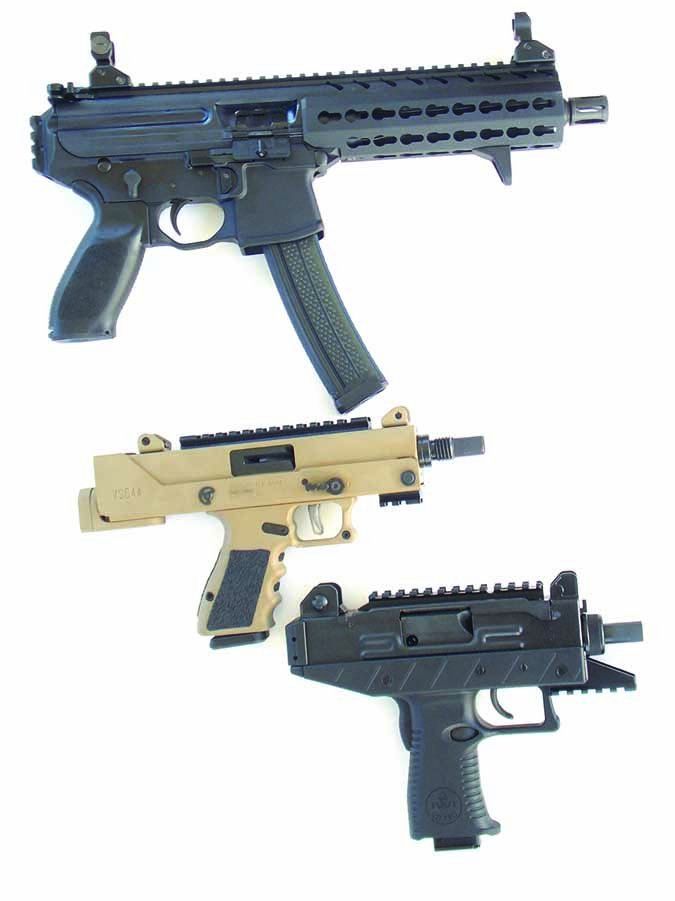
The civilian-available semi-auto versions of what began as expensive SBR’s (short-barrel rifles) or true submachine guns are advertised as having good accuracy and reliability while offering a more compact package than a rifle and higher round counts than most handguns. For the task of guarding the castle, we’ve been around the block a time or two, and have suitable choices for nearly anyone — great pistols, rifles, and shotguns. For this test, we had to suspend any preconceived notions of what we might prefer for home defense and test these firearms based on their own merits. Those merits, we found, are few. If you are shooting for fun and simply making brass, anything that goes bang is suitable. We’ll get into the reasons for these judgments, but we like to be clear up front. The SIG Sauer MPX-P is one expensive means of not accomplishing much. The Uzi Pro pistol has drawbacks that made shooting downright frustrating. The MasterPiece Arms Defender proved to be the best of the three and has merit in a defensive situation, within certain narrow parameters. We arrived at this decision by using personal-defense criteria as the overriding factor in providing Buy/Don’t Buy advice to our loyal readers. So, in more detail, here are our reasons for making these assessments.
How We Tested
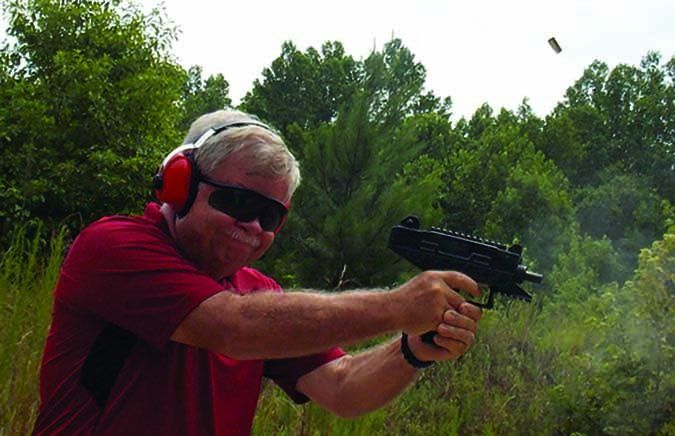
Our 9mm Luger ammunition for this test included a 158-grain lead round nose choice from Tomkatammo.com ($18/50 rounds). We also used Black Hills Ammunition 124-grain jacketed hollow points from VenturaMunitions.com ($14/20), a Black Hills Ammunition 115-grain EXP, an Extra Power load not quite in +P territory, also available from VenturaMunitions.com, ($17/20), and a SIG Sauer 115-grain full-metal-jacket load from Cabelas.com ($28/50). Others included the SIG Sauer 124-grain V Crown jacketed hollow point from Luckygunner.com ($16.75/20), and the Hornady American Gunner 124-grain XTP +P from MidwayUSA.com ($14.79/20). We used the Tomkat 158-grain, the Black Hills 124-grain JHP, and the SIG 115-grain FMJ load in benchrest accuracy testing.
Range Data
| BLACK HILLS AMMUNITION 124-GR. JHP | UZI PRO | MPA DEFENDER | SIG SAUER MPX-P |
| Average velocity | 1080 fps | 1107 fps | 1090 fps |
| Muzzle energy | 321 ft.-lbs. | 337 ft.-lbs. | 327 ft.-lbs. |
| Smallest group | 6.7 in. | 3.5 in. | 2.3 in. |
| Largest group | 9 in. | 4 in. | 3 in. |
| Average group size | 7.9 in. | 3.8 in. | 2.6 in. |
| SIG SAUER ELITE 115-GR. FMJ | |||
| Average velocity | 1190 fps | 1222 fps | 1234 fps |
| Muzzle energy | 361 ft.-lbs. | 381 ft.-lbs. | 388 ft.-lbs. |
| Smallest group | 7.9 in. | 3.3 in. | 2 in. |
| Largest group | 9.7 in. | 4.5 in. | 3 in. |
| Average group size | 8.2 in. | 3.9 in. | 2.5 in. |
| TOMKAT 158-GR. RNL | |||
| Average velocity | 823 fps | 855 fps | 812 fps |
| Muzzle energy | 237 ft.-lbs. | 256 ft.-lbs. | 231 ft.-lbs. |
| Smallest group | 6.5 in. | 3 in. | 3.3 in. |
| Largest group | 9.5 in. | 3.6 in. | 4.5 in. |
| Average group size | 8.3 in. | 3.3 in. | 3.9 in. |
| To collect accuracy data, we fired five-shot groups off a solid bench rest. Distance: 25 yards. We recorded velocity with a Shooting Chrony Master Chronograph. The first sky screen was set 10 feet from the muzzle. Ammo sources: Black Hills Ammunition 124-grain JHP (VenturaMunitions.com $14.01/20); SIG Sauer Elite 115-grain FMJ (Cabelas.com, $28/50);Tomkat 158-grain RNL (Tomakatammo.com $18/50). |
|||
IWI Mini Uzi Pro UPP9S 9mm Luger, $999
GUN TESTS GRADE: C
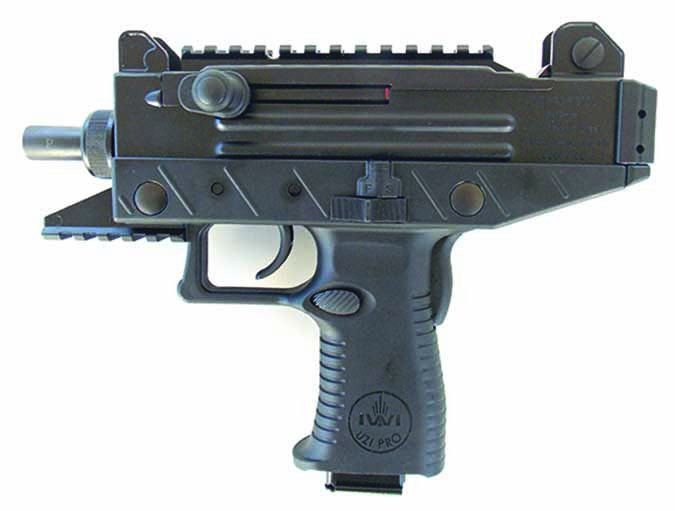
The Uzi is a comparative rarity, a pistol that is well made of good material and with good engineering, but which is not something we would wish to own or use.
| ACTION | Gas piston semi-auto |
| OVERALL LENGTH | 9.5 in. |
| OVERALL HEIGHT | 7.1 in. |
| MAX WIDTH | 2.5 in. |
| WEIGHT UNLOADED (w/o Mag) | 56 oz. |
| WEIGHT LOADED | 66 oz. |
| BARREL | 4.5 in.; steel |
| MAGAZINES | 20, 25 rounds |
| SLIDE | Steel |
| FRAME | Polymer |
| FRAME FRONT STRAP HEIGHT | 3.5 in. |
| FRAME BACK STRAP HEIGHT | 2.5 in. |
| GRIPS | N/A |
| GRIP THICKNESS (max) | 1.25 in. |
| GRIP CIRCUMFERENCE (max) | 5.25 in. |
| SIGHTS | Steel |
| TRIGGER PULL WEIGHT | 14 lbs. |
| TRIGGER SPAN SINGLE ACTION | 2.7 in. |
| SAFETIES | Manual and grip |
| WARRANTY | 5 years |
| MADE IN | Israel |
| WEBSITE | IWI.us |
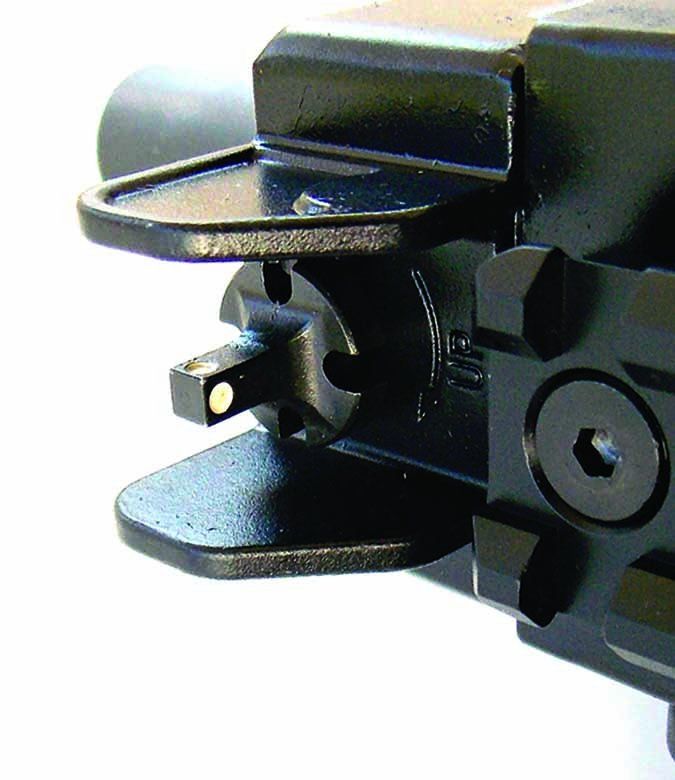
This was a recent counter price for this product at Tombstonetactical.com. The firearm which inspired the Mini, the Uzi 9mm submachine gun, is a remarkable firearm in many ways. From the telescoping bolt to the superbly ergonomic design, the Uzi was among the most reliable and effective SMGs of the day. It was inevitable a civilian-legal semi-automatic would be marketed. Like all semi-automatic SMG-type pistols or carbines, the original, designed to ensure hits with a cyclic dispersion of ammunition, is reduced to firing one cartridge with every pull of the trigger. Compared to a carbine or pistol designed for accurate semi-automatic fire, such a converted SMG is problematic at best. We test each gun on its own merits, but comparison to the original cannot be avoided. The pistol tested is among the most recent of these.
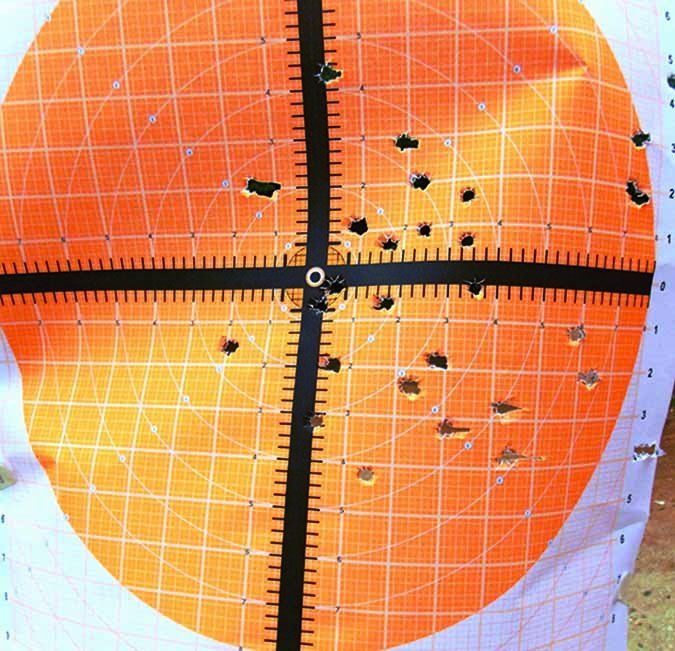
Today, military units use short-barrel carbines and even civilians use SBR’s when legal. A civilian-legal semi auto version of an SMG would have to have good points to be worth the price. The Uzi Pro pistol version may be used as a home-defense firearm, but we see it primarily as a collector’s piece or for the recreational shooter. There is a significant difference in firing the Uzi Pro pistol and the carbine version of the Uzi SMG. The pistol illustrated is made in Israel and builds upon the Uzi name. While recognizable as a Uzi pistol, the example illustrated differs considerably from the original. The lower receiver is polymer. This receiver features a light rail. The grip itself is different from the original Uzi. The grip features finger grooves the raters found comfortable. The grip frame is smaller in circumference than the original Uzi SMG. A pistol is more difficult to handle with a fat grip than a carbine, and this modification was welcome. The magazine release has been changed. The old release was a military-style catch at the bottom of the hand grip. You may still simply bring the hands together to load the magazine into the pistol. The modern Browning-style magazine release works fine.
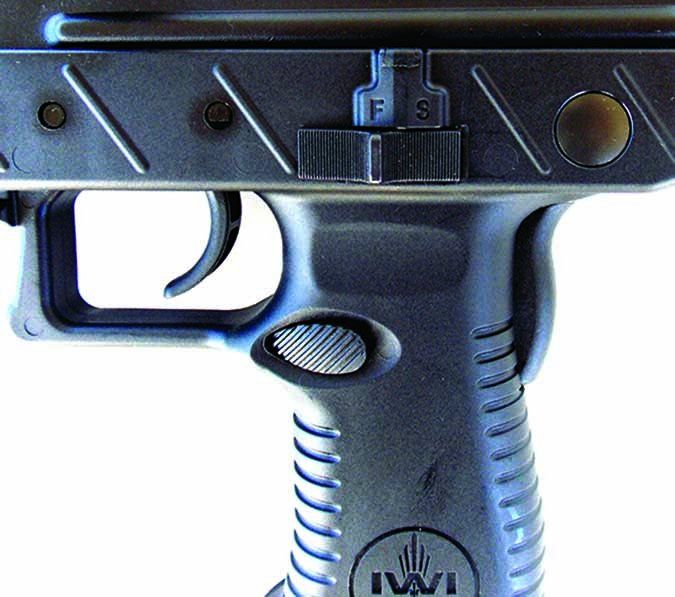
The grip is quite ergonomic. The original safety was behind and above the trigger on the hand grip. The Uzi Pro has moved the safety to the receiver. The new safety is less ergonomic than the earlier design and requires more movement to operate. To press the safety forward for Fire or back for Safe requires breaking the firing grip. The safety was also stiff. The safety may be applied with the bolt cocked or not. After some effort and practice, we were able to use the safety quickly enough as we moved the Uzi Pro into the firing position. We admit the slimmed grip, made possible with polymer, may have made it difficult to retain a safety in the firing grip. The grip safety has been retained, which we like. The cocking handle has been moved from the top of the receiver to the side of the receiver. This is an improvement, we feel, especially if optics are mounted. The cocking lever does not reciprocate with the bolt. The new cocking lever location allows a light rail to be added to the top of the receiver. The steel sights are protected by wings in the military fashion. The sights offer a white-dot arrangement. The rear sight is adjustable for windage. The front sight may be adjusted in AR-15 style.
The steel magazines were well made and seemed rugged. The Uzi Pro magazines are true double-column magazines. A cartridge is pressed into the magazine either to the left or the right and the magazine is loaded to full capacity. The pistol is supplied with a 20-round and a 25-round magazine. Based on our experience, these magazines are among the best designed and rugged magazines supplied with any firearm of the type.
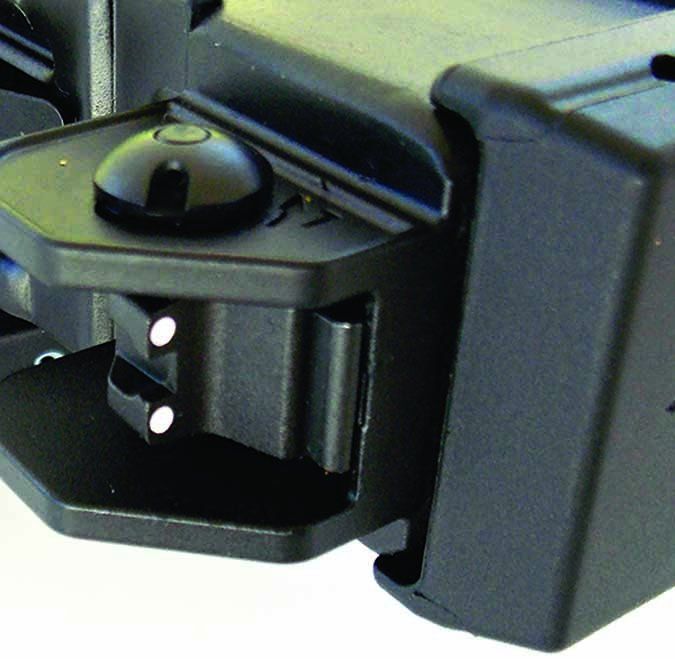
The Uzi Pro is a blowback pistol. The weight is a solid 59 ounces. While recoil isn’t a concern, the pistol was heavy to handle. The trigger action was heavier than expected. It was off the scale for our measuring device, but was estimated at 14 pounds. There was considerable movement as the striker fell. We attempted a number of dry-fire sessions before firing. The trigger did not give us confidence in the ability to fire the piece accurately. During the familiarization phase, some raters noted that their experience indicated the Uzi might not be reliable with JHP loads, so we included those. While we used standard loads for accuracy testing, initial firing was accomplished with a magazine each of six loads, using the 20-round magazine, for 120 cartridges. The first was a loading especially designed for suppressed 9mm handguns. With the popularity of suppressors, we felt the pistols should run with this load.
Fired off hand, the Uzi Pro handled the initial six magazines without any type of malfunction. The Uzi’s front sight just seemed to hang on the target with these loads. Even with the Hornady +P load, the pistol was mild in recoil, but the impulse was noticeably heavier. However, the grouping during the combat firing drills was not impressive. The pistol was held in two hands and the front sight placed on the X ring. The balance of the pistol and the heavy trigger played against us. We also had to keep pressure on the grip safety during firing. We would have preferred larger sights for combat shooting, as the precision nature of the sights was wasted with this handgun. Half of the raters involved found that during recoil, they sometimes recovered and aimed with the protective wing rather than the front sight. This resulted in a wide miss. In short, the pistol was considerably inferior to a Glock 17 9mm or Browning Hi-Power 9mm in combat shooting, as just two examples. When firing from the bench rest, we were able to rest the pistol against a range bag with the 20-round magazine in place and carefully fire at 25 yards. As far as getting a solid firing position, the Uzi presented little difficulty. The 14-pound+ trigger and heavy striker fall were each impediments to accuracy. Best results were with the Tomkat 158-grain load. The pistol may have intrinsic accuracy, but practical accuracy is limited.
Our Team Said: We feel the Uzi pistol suffers in downsizing from SMG configuration. It is an Uzi, however, and is the real thing made in Israel. The Uzi Pro is reliable with a range of ammunition. Handling and ergonomics are improved over the original Uzi pistol and the Pro, while heavy, is lighter than previous Uzi pistols due to use of a polymer frame. We did not like the safety position compared to the original, but after some acclimation, we gave it a pass. It is superior to the MPA safety. The sights are good, perhaps too good, for this pistol. A larger set for close-range fire would be better. The magazines are very sturdy and were the best tested.
The heavy trigger was a demerit. We rated the pistol down because of its poor accuracy, heavy trigger, and high cost.
MasterPiece Arms Defender Pistol MPA30DMG 9mm Luger, $680
GUN TESTS GRADE: A- (Best Buy)
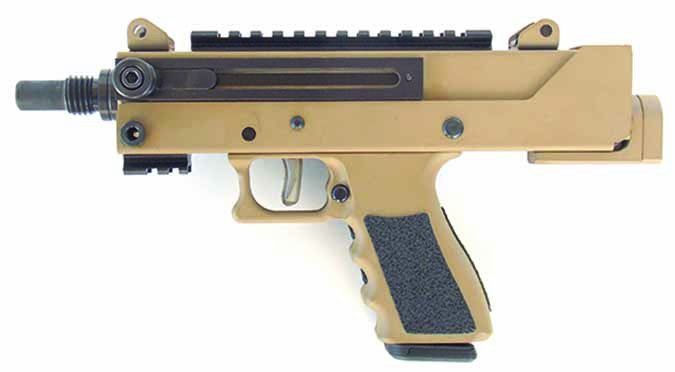
The Defender pistol was an enjoyable firearm to use and handle. It offered good practical accuracy, reliability with a range of ammunition and aftermarket magazines, and the trigger action was excellent. There was little to fault the MPA, if you solely look at what it is. But we didn’t like the safety.
| ACTION | Blowback semi-auto |
| OVERALL LENGTH | 11.8 in. |
| OVERALL HEIGHT | 6.25 in. |
| MAX WIDTH | 2.5 in. |
| WEIGHT UNLOADED | 66 oz. |
| WEIGHT LOADED | 73 oz. |
| BARREL LENGTH | 5.5 in. |
| BARREL | Steel |
| MAGAZINE | 17 rounds |
| SLIDE | Steel |
| FRAME | Steel |
| FRAME FRONT STRAP HEIGHT | 3.5 in. |
| FRAME BACK STRAP HEIGHT | 2.5 in. |
| GRIP THICKNESS (max) | 1.25 in. |
| GRIP CIRCUMFERENCE (max) | 6.2 in. |
| SIGHTS | Steel |
| TRIGGER PULL WEIGHT | 5.5 lbs. |
| TRIGGER SPAN SINGLE ACTION | 2.6 in. |
| SAFETIES | Manual |
| WARRANTY | Limited lifetime |
| MADE IN | MasterPieceArms.com |
| WEBSITE | USA |
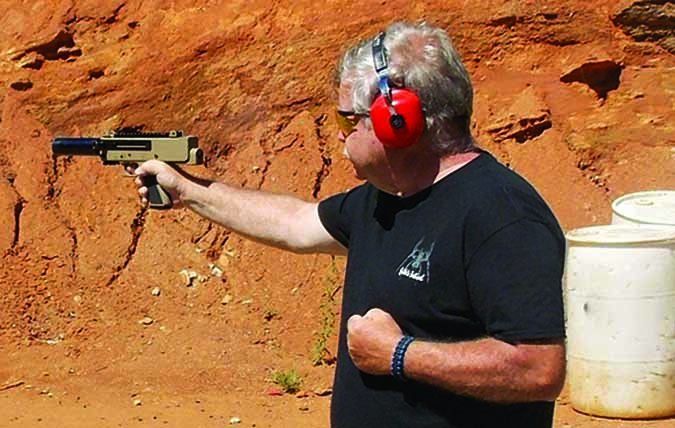
This was the list price at MasterPieceArms.com. The MPA is another blowback semi-auto version of a popular SMG. This pistol is a close, but not exact, copy of the MAC 10 SMG and variants. The Ingram-designed SMGs and pistols have survived in various forms for decades. Execution has ranged from poor to very good. Since they were originally designed to be as compact as possible, it wasn’t as big a leap creating a MAC 10 pistol as it was to create a Uzi pistol. The MasterPiece Arms pistol rates very good for execution. In general layout, the pistol is similar to the Uzi. The MPA pistol’s lower receiver light rail is a bit short, but the all-steel pistol looks good with a nice, even finish. The upper rail is more spacious. The sights are well protected.
With the weight of these handguns, a dropped firearm would flatten the sights. The pistol weighs 66 ounces, 7 ounces more than the Uzi Pro. The balance, however, is better, and the MPA pistol is livelier in the hand. The front-post sight and U-notch rear sight are precise when properly lined up. The bolt is easily manipulated. The safety location, on the right side of the receiver, is less handy than the Uzi. This safety is definitely a two-hand job, with one hand holding the pistol and the other manipulating the safety. One of the raters pointed out that since the Uzi and MPA are most likely to be used as recreational shooters, the best means of keeping the pistol at ready is with the chamber empty.
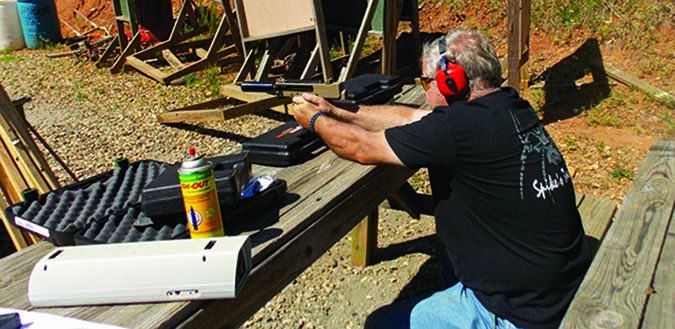
The grip features finger grooves and skateboard tape for adhesion and abrasion. The thin trigger proved comfortable to use, breaking at 5.5 pounds and with a clean, distinct feel that our shooters liked. We supposed that a lighter trigger would not survive well with the heavy bolt coming violently to rest with every pull of the trigger in a SMG , and the Uzi showed this heritage. The heavy trigger prevented runaway firing. The heavy trigger isn’t necessary with a semi-auto pistol, but it does require re-engineering. The MPA profits from this re-engineering. This trigger has survived more than 300 rounds without any trouble.
The pistol is supplied with a fake suppressor, which we used to hold for stability when firing the MPA pistol from below eye level. The barrel is threaded for a suppressor, which would be an advantage over the Uzi. We fired the MPA pistol with and without the fake suppressor. Holding the MPA with two hands and firing quickly, the pistol was a joy to use, offering excellent control and moving quickly in the hands.
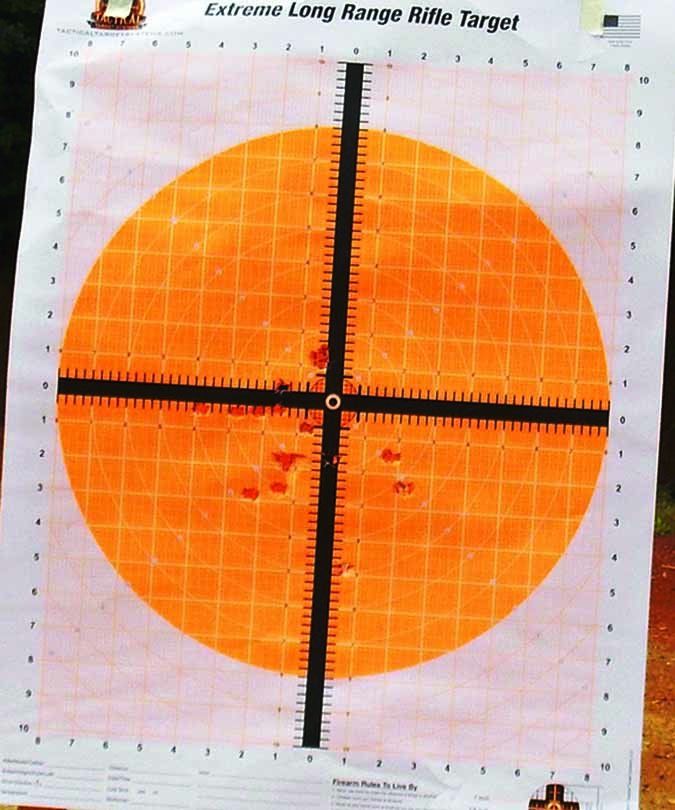
The MPA 9mm accepts Glock 17 magazines. The pistol was supplied with a single Khan magazine. We added MagPul magazines and Glock types as well. The pistol never malfunctioned, and each magazine locked in place and functioned well. We fired the same 120-round qualification with the MPA, although it was a bit more difficult with 17-round magazines. (A Glock 33-round magazine would have been ideal.) There were no malfunctions.
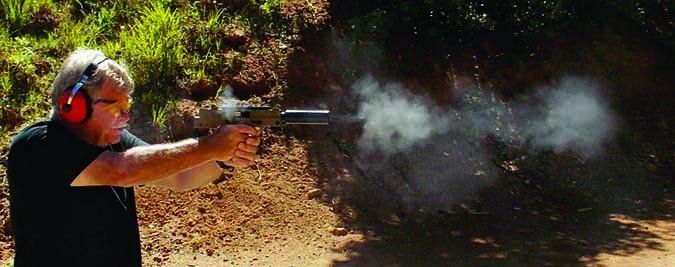
Although the MPA is heavier than the Uzi Pro, the balance is superior and the pistol is easier to fire and hold. The 5.5-inch barrel also gave a velocity advantage over the Uzi. As an example, the Black Hills Ammunition 124-grain JHP clocked 1080 fps from the Uzi and 1107 fps from the MPA. The 5.5-inch barrel of the MPA gave higher velocity than the average 5-inch barrel 9mm pistol, with the Black Hills Ammunition 115-grain EXP clocking 1284 fps versus 1220 fps in the Uzi and 1190 fps in a 5-inch-barrel Browning Hi-Power. Since there were no malfunctions with +P loads and no overpressure signs, all three of the pistols tested are good to go with +P loads.
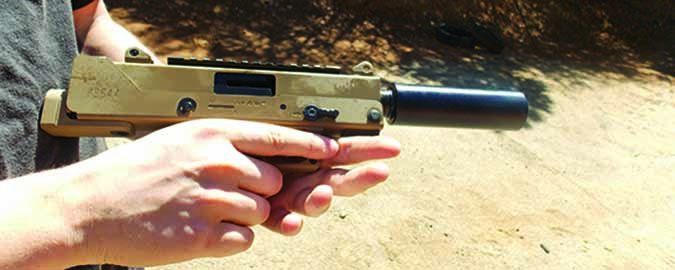
At the bench, we settled into a firing position and put three loads through the MPA pistol for accuracy. The Tomkat 158-grain load was mild and accurate. The largest groups were smaller than the smallest group fired with the Uzi.
Our Team Said: The MPA pistol outperformed the Uzi considerably in handling and accuracy. It is also less expensive. The pistol handles well enough to have utility as a home-defense piece. With a red-dot scope, it just might move from a home defense role into area defense. We rated it down a half grade based on the safety location. The MPA is supplied with a threaded barrel and a fake suppressor, which is valuable. It is the least expensive pistol tested, but the Best Buy.
SIG Sauer MPX-P 9mm Luger, $1700
GUN TESTS GRADE: B
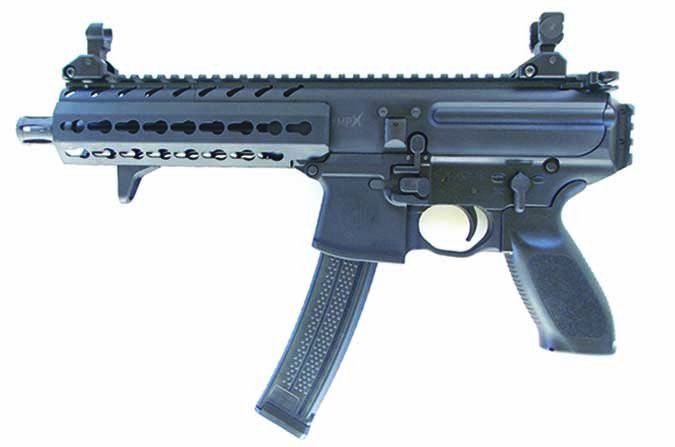
The SIG MPX-P is the heaviest and most expensive of the three pistols tested. It is also the only pistol to suffer a malfunction, albeit with specialized subsonic ammunition. It would be very difficult to fit a suppressor on the MPX-P, and the action isn’t as likely to accommodate subsonic ammunition, an important consideration with modern shooters.
| ACTION | Closed, fully locked short-stroke, pushrod gas system |
| OVERALL LENGTH | 16.85 in. |
| OVERALL HEIGHT | 11 in. |
| MAX WIDTH | 2 in. |
| WEIGHT UNLOADED | 4.8 lbs. |
| WEIGHT LOADED | 5.6 lbs. |
| SLIDE | Aluminum |
| BARREL | Steel; 8 in., 1:10 twist; 13.5×1 LH threads |
| MAGAZINE | Lancer polymer 10/20/30 30-rd. AR-style |
| FRAME | Aluminum |
| FRAME FRONT STRAP HEIGHT | 3 in. |
| FRAME BACK STRAP HEIGHT | 4.5 in. |
| GRIP THICKNESS (max) | N/A |
| GRIP CIRCUMFERENCE (max) | 5.5 in. |
| SIGHTS | Steel |
| TRIGGER PULL WEIGHT | 7 lbs. |
| TRIGGER SPAN SINGLE ACTION | 2.5 in. |
| SAFETY | Ambidextrous |
| WARRANTY | Limited lifetime |
| MADE IN | (603) 610-3000 |
| WEBSITE | USA |
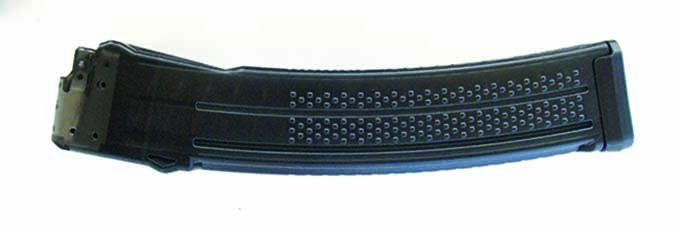
This pistol is in a different class than the others, but it’s not an unfair match up, as each of the three might be used for recreational shooting and home defense. The SIG MPX-P isn’t based on a submachine gun build, but instead on the AR-15 rifle. As such, the handling and operation of the MPX-P will be familiar to most shooters. The design itself is highly modified, but the standard operating procedure is the same as the AR-15. The pistol is similar to a short AR-15 in appearance. The MPX-P features a standard AR-15 cocking handle, AR-15/type safety, magazine latch, and bolt release. If you use an AR-15 rifle, it will be second nature to operate the MPX-P. The MPX-P is heavy for a pistol at 5.2 pounds, but it balanced well.
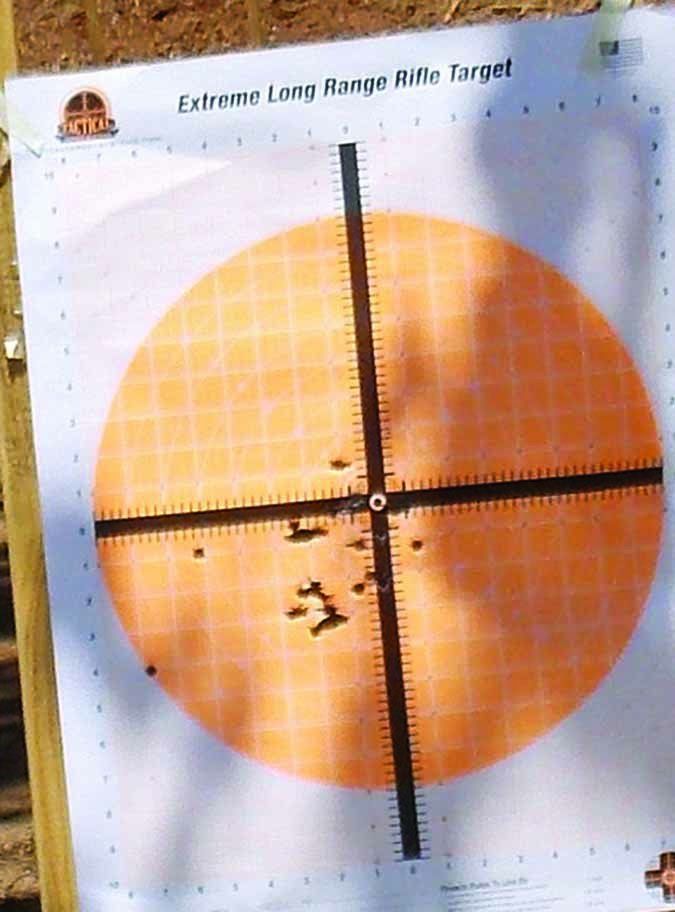
While we did not run down a comparison, there are certain parts, such as the trigger group, of the MPX-P that will interchange with the AR-15 rifle. This isn’t a converted AR-15, however, as the converted 9mm AR sometimes isn’t ideal. The MPX-P is a new design intended to compete in the market once dominated by the HK MP5. The MPX-P features a full-length rail that is longer than either of the SMG-based designs. It is no problem to mount a red-dot scope on it. The MPX-P is supplied with a fold-down aperture sight and front sight. These sights offer good adjustment and a good sight picture. The forend attachment system is a SIG design. The bolt and bolt carrier are like that of an AR-15, but geared to the 9mm Luger cartridge. The MPX-P recoil spring is housed in the upper receiver, an important difference between this rifle and the AR-15. Rather than the blowback design of the other 9mm pistols, the MPX-P uses a short-stroke piston gas system.
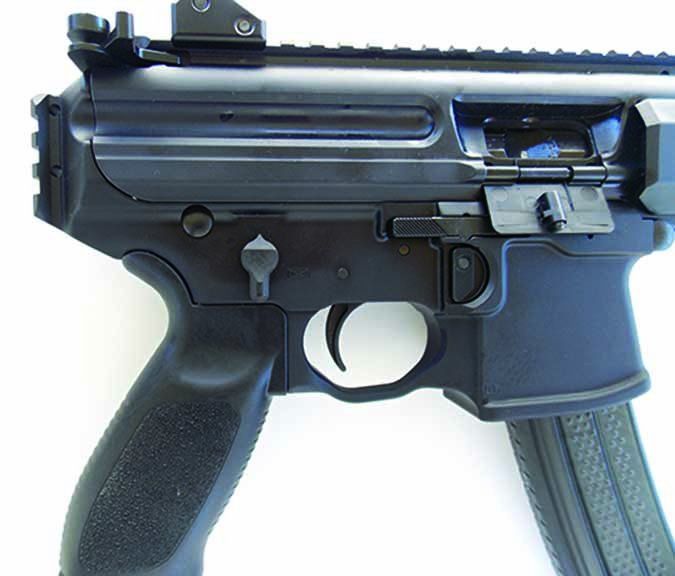
Also, the MPX-P features a quick-change barrel system that will have more relevance for those who wish to change the pistol to a 357 SIG or 40 S&W and retain the easy-shooting 9mm for practice. At present, these kits are not available. Do not count this as an advantage until the kits are actually offered for sale.
The magazines are plastic. There is only one supplied with the gun, and spares are expensive, at approximately $60. SIG tells us the barrel uses a non-standard thread that isn’t compatible with most muzzle brakes and suppressors. Reason: Our SIG expert tells us engineers were concerned that someone would fit a 5.56mm muzzle brake to the MPX-P. The supplied muzzle brake works well enough.

When cocking the pistol AR-15/style with the cocking handle, it may be a bit slower and more awkward than the MPA; however, the safety location is leagues ahead of the other two pistols.
We were able to test the 120 rounds of ammunition in the same manner as with the other pistols, but we loaded the magazine to a full 30 rounds, simply noting how the magazine was loaded and with which loading. The magazine is a double-column design, and it is loaded in the same manner as the as the Uzi magazine. The plastic magazine did not give the raters the same confidence as the stout metal magazine of the Uzi or the proven Glock magazine of the MPA, but it worked well enough.
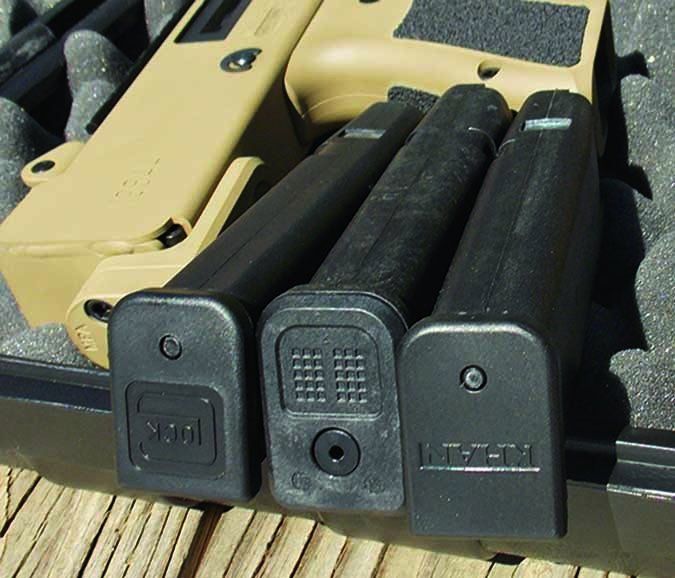
In combat shooting the SIG did well, but the trigger was heavier than expected at almost 9 pounds. The 8-inch barrel and long forend afforded excellent control. Control was similar to the MPA when the MPA was fitted with the fake suppressor. The shorter gun might handle faster in a vehicle or in the home, but the MPX-P handled quickly. The long barrel gave better accuracy and control when fired below eye level. Combat groups were good. The 8-inch barrel did not exhibit the velocity advantage we thought we would see. As an example, the Black Hills Ammunition 124-grain JHP clocked 1080 fps in the Uzi, 1107 fps in the MPA, and 1090 fps in the MPX-P. Other loads had a similar correlation.
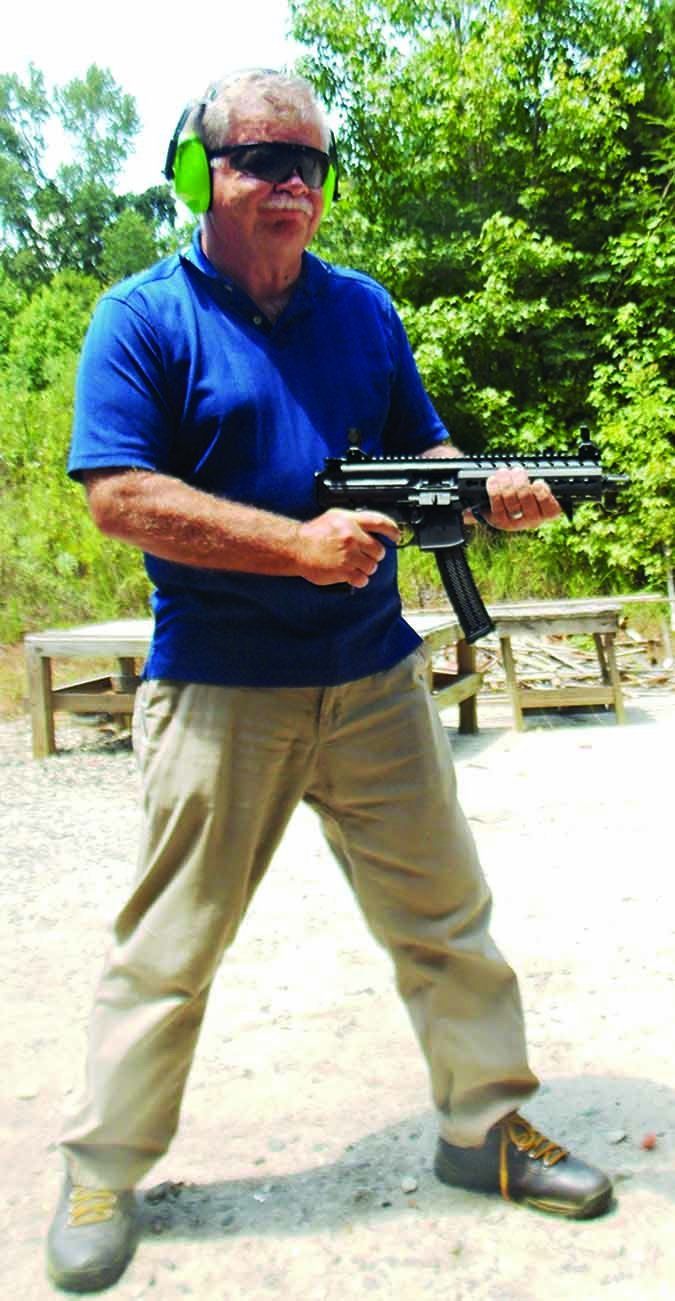
The MPX-P was the only pistol to malfunction during the test. The load was the Tomkat 158-grain 9mm. This load has functioned in other 9mm handguns, and most important, in the other semi-auto pistols tested. During this malfunction, the MPX-P fired once and then short cycled. While this is a specialty load for subsonic use with a suppressor, it functioned in the other handguns.
We hand-cycled the 158-grain cartridges used in the accuracy test, which probably resulted in a worse showing than would be expected. Resting the forward portion of the pistol on the benchrest with the magazine extending below the table and offsetting our chair resulted in a rock-solid firing position. The SIG 115-grain FMJ load gave a solid 2.0-inch group to become the most accurate load tested in the MPX-P and the best showing of the test.
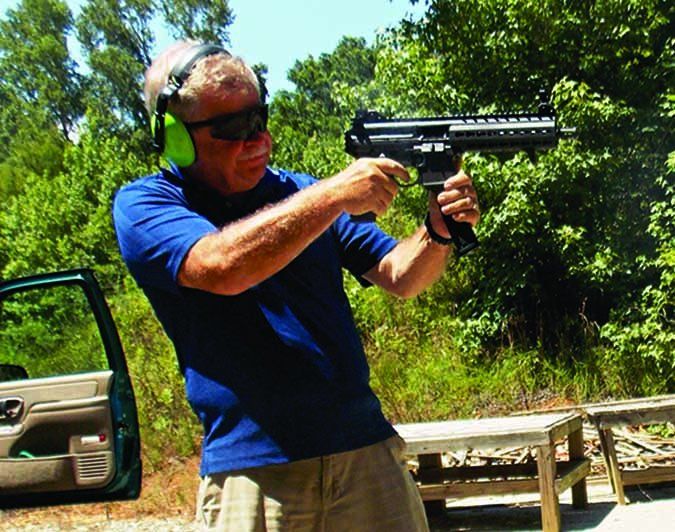
A problem that isn’t easily addressed is the sight offset. The sights are AR-15 types and this means they set high above the bore. The MPX-P fired low at close range, such as 7 yards, which means that this would have to be accounted for in a hostage rescue drill. At 25 yards, the SIG fired only slightly low.
Our Team Said: The MPX-P is heavy for a pistol at 5.2 pounds, but it balanced well and is pricey, which isn’t bad if you have sterling performance. The pistol had good accuracy, but not more than a match-grade conventional handgun. The pistol is controllable and comfortable in rapid fire. However, the MPA with the fake suppressor used as a hand rest gave similar rapid-fire groups at close range. The MPX-P is heavy for a pistol at 5.2 pounds, but it balanced well. It was reliable with FMJ and JHP loads, but not low-impulse loads. The magazine we did not like functioned perfectly, so we cannot complain.
Written and photographed by R.K. Campbell, using evaluations from Gun Tests team testers.


























Hi guys. Thanks for the tests. Now I know why I went MPA. Anyhoo, my MPA shoots pretty much any fmj with a good round nose. Yet, JHP is a nightmare. Doesn’t feed worth a bag of pork rinds (yes, my Jewish sarcasm). Also, when spent round is ejected, it hits the ejection port backwards and dents the case mouth, making me somewhat nervous to reload the case. MPA says it’s do to happy medium between slow and faster FPS in the 9mm with such a heavy bolt. It ejects the case but depending on how fast the round is, the bolt may remain closed or can open faster when fired. (Never heard of that, but some fertilizer is better than others) However, the only self-defense ammo I know cycles properly is the Ruger APX round nose, but can’t get it anymore. The gun has no feed ramp due to being a heavy blow back design.
Any suggestions. Thanks, be blessed.
Hello From Australia
People here claim I’m deceased, but I’m still here, living. Very much living.
Our Prime Minister Anthony Albanese reckons he’s me, see, because he reckons he stole my identity, so I’m Not here any more.
But I’m here. He just wants to defraud me, but he’s not getting far with that.
I used to be a Royal Australian Military Dragoon, Grenadier and Beefeater years ago. I liked that work, I can tell you. I’m Sworn In, but not serving now. I was ‘Mounted Royal Police’ then.
Walther used to make a Custom Order P1 Pistol in 9mm Parabellum, that was actually a ‘Selectable’ fully Automatic version. Extra long Magazines were available. That was a very handy and extremely high quality Machine Pistol. Long Barrell versions were available. Excellent German manufacturing. I had one of those. Extremely useful, it had a very good cyclic rate. 1200 Rounds per minute I think.
The ideal Rifle Twist even for 9mm is 1:8. Any more Twist and the ‘Cyclic Rate’ must be slowed or the barrel overheats and burns out. 1:10 will overheat and be prone to jamming. I see AK 47s are Rifled at 1:10 now, as are American Henry Homesteaders. That’s all Fraudulent and will produce jamming and reliability issues.
Your machine pistols you have here. Provided the Rifle Twist is 1:8, then these might be quite good, but I see at least one model you have there is 1:10. I would not go anywhere near that.
I had an UZI Mini Sub Machine Gun in 1987. Selectable. 17″ Barrell. This had a Twist of 1:8 I recall and a Rate of fire of 970 rounds per minute. Very nice, extremely high quality Italian Machine Gun. However even at that Twist, One day’s solid use, only and the Barrel required changing. Simply how those Guns are.
My Arms saw considerable use at that point in time, but we Dragoons were extremely well equipped and ‘Armoured’, so I never ‘took too many bullets’. Grazed is all. Had to sew myself up, one day, nice little graze. All by myself one time during a fierce Skirmish. But my Uzi, Walther P1 (Or P38) did not let me down. Both had exceptional Cyclic rates of fire and were extremely Reliable.
There you go that’s, that which I wanted to say.
Marc.
Lake Macquarie
N.S.W Australia.